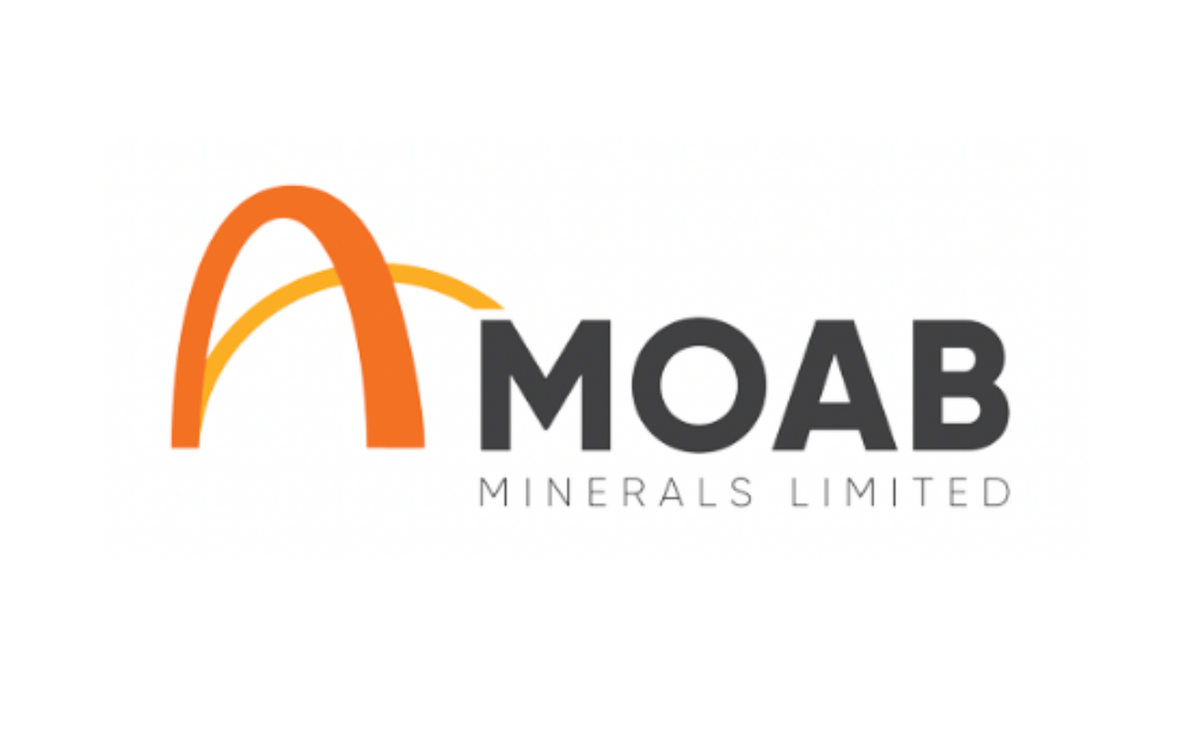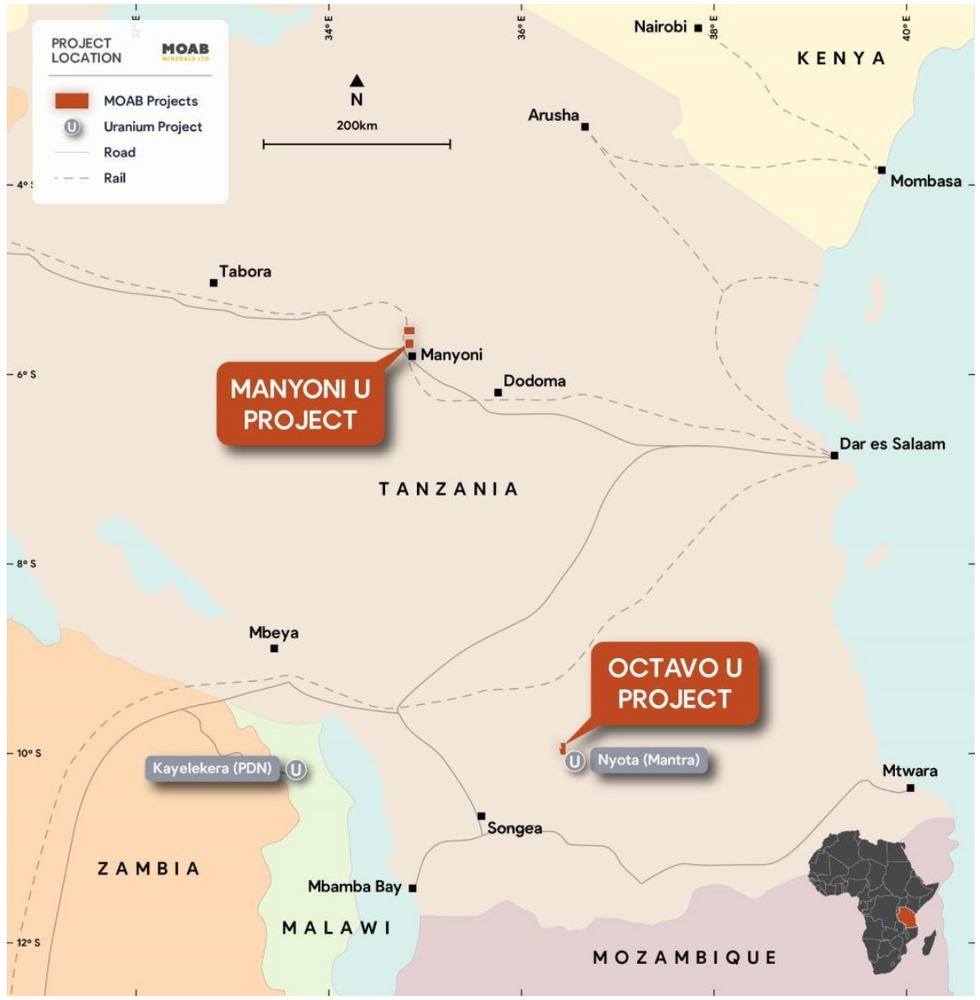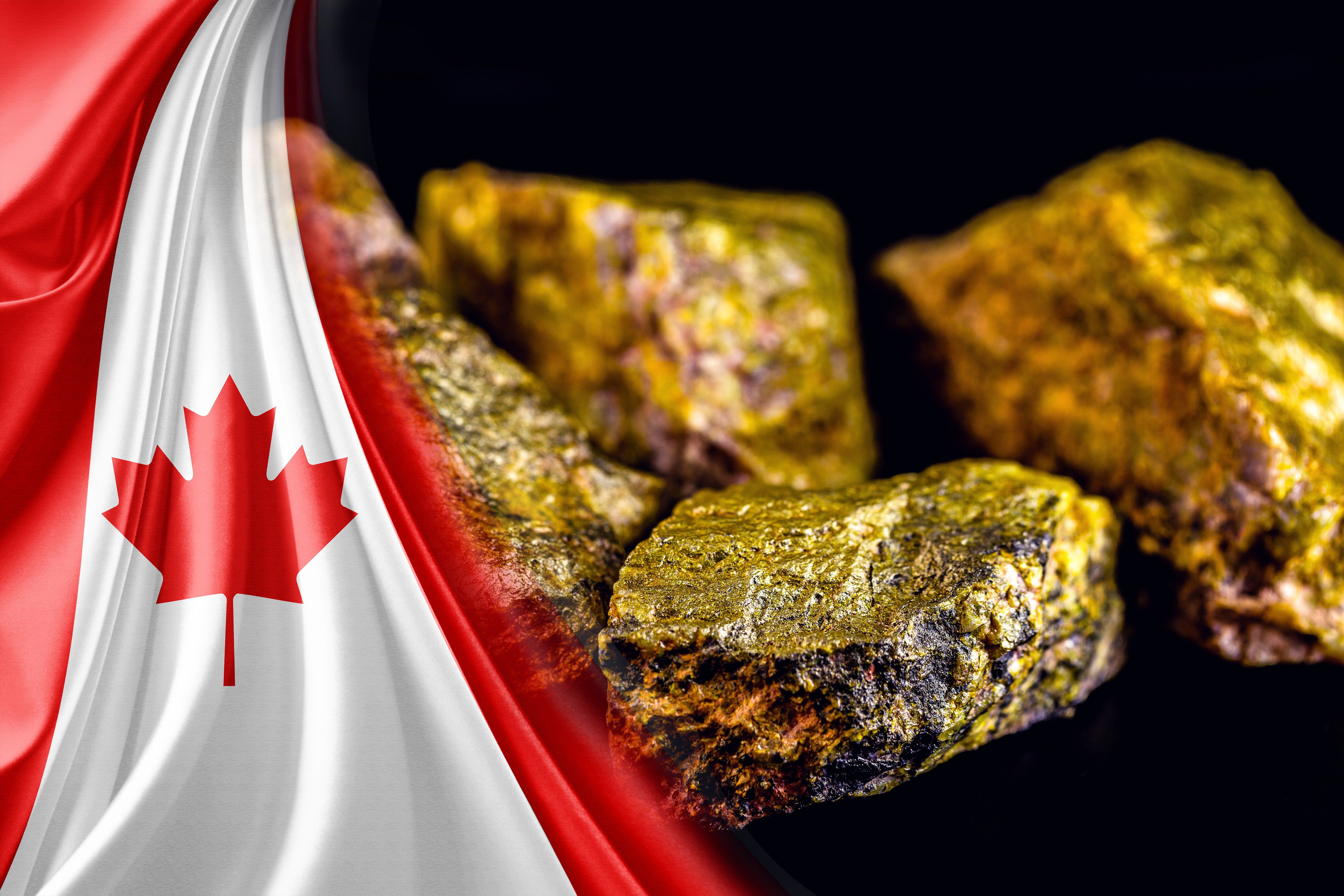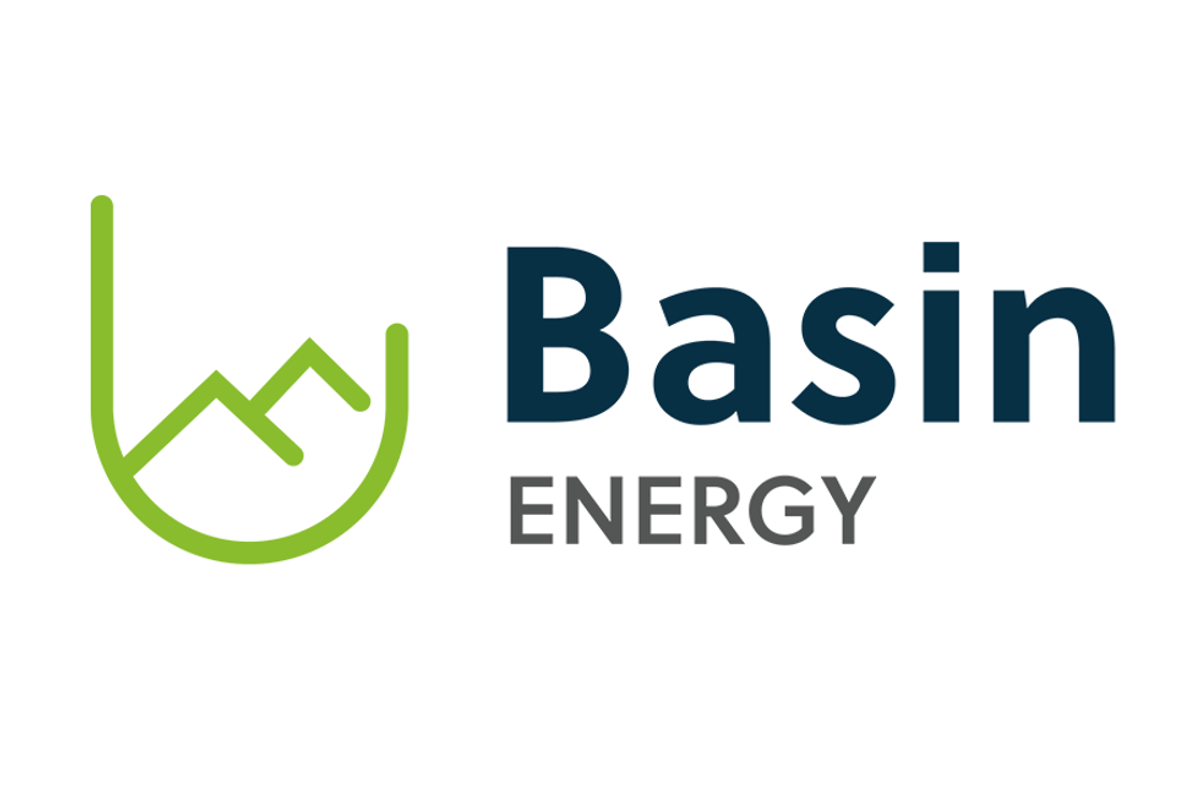
July 08, 2024
Moab Minerals Limited (ASX: MOM) (Moab or the Company) is pleased to announce that it has completed the acquisition of 81.85% of the shares in Australian proprietary company Linx Resources Pty Ltd (Linx), plus an additional 7.75% following the conversion of loans owing to Moab by Linx, bringing Moab’sownership of Linx to 89.6%. Linx is the 80% owner of certain Prospecting Licenses comprising the Manyoni Uranium Project and the Octavo Uranium Project, both located in Tanzania (refer ASX announcement dated 12 March 2024).
HIGHLIGHTS
- Moab has completed the acquisition of 81.85% of the shares of Linx Resources Pty Ltd, which boasts a diverse portfolio of advanced, large-scale uranium projects in Tanzania.
- Moab has converted its loan to Linx of $521,000 to equity in Linx, bringing Moab’s ownership of Linx to 89.6%.
- The Asset portfolio includes the Manyoni and Octavo Uranium Projects, covering a total of 216 km2.
- Strategically located just 5km north of Manyoni town, the Manyoni Uranium Project enjoys convenient access to modern railway and sealed highway infrastructure as well as readily available power and water resources.
- The Manyoni Uranium Project was previously explored, and extensively drilled, by Uranex Ltd from the early 2000’s until 2013.
- Drilling to commence at the Manyoni project in August/September.
- With approximately $1.9 million in cash and equivalents, Moab is well equipped to fund exploration and development initiatives.
Moab Managing Director, Malcolm Day commented “The completion of the acquisition of such high potential uranium projects is transformational for the Company. The fact that Uranex Ltd previously explored, and extensively drilled, the Manyoni Uranium Project from the early 2000’s to 2013 assists the Company greatly. There is a large volume of historic exploration data, including drilling data, that the Company has access to that will effectively save the Company a lot of time and money. The Fukushima disaster in 2011 had a dramatic impact on the uranium price, and thus most pre-production uranium projects worldwide were shelved. Given the current uranium price of circa US$85/lb, Moab is in the right place at the right time to re-evaluate the Manyoni Uranium Project and to commence exploration on the Octavo Uranium Project”.
The Manyoni and Octavo Uranium Projects
The Manyoni Uranium Project tenements are located in the Republic of Tanzania (pop. 65 million), approximately 100km northwest of the capital city of Dodoma (pop. 765,000). The location of the uranium project at Manyoni is shown in Figure 1 and Figure 2 and the location of the Octavo uranium project is shown in Figure 1 and Figure 3.



Tenement Information
The Manyoni and Octavo tenements are Prospecting Licences that are granted for an initial period of 4 years, renewable for further periods of 3 years and then 2 years.
Click here for the full ASX Release
This article includes content from MOAB Minerals, licensed for the purpose of publishing on Investing News Australia. This article does not constitute financial product advice. It is your responsibility to perform proper due diligence before acting upon any information provided here. Please refer to our full disclaimer here.
The Conversation (0)
19 December
Ben Finegold: Uranium in 2026 — Price Outlook, Plus Stocks, Supply and Demand
Ben Finegold, head of research at Ocean Wall, shares his 2026 outlook for uranium supply, demand and prices, emphasizing that the nuclear energy story remains strong. While 2025 brought little movement in the spot price, he believes the stage is set for higher numbers. Don't forget to follow us... Keep Reading...
19 December
Denison, Skyharbour Finalize Saskatchewan Uranium Joint Venture Deal
Denison Mines (TSX:DML,NYSEAMERICAN:DNN) has closed a previously announced deal with Skyharbour Resources (TSXV:SYH,OTCQX:SYHBF) that repurposes a large block of uranium exploration ground surrounding Denison's flagship Wheeler River project in Northern Saskatchewan.The recent transaction... Keep Reading...
18 December
5 Best-performing Canadian Uranium Stocks of 2025
The uranium market moved through 2025 with less drama than the previous year, but the quieter tone masked a sector still tightening beneath the surface. After 2024’s surge to two-decade highs, in 2025, U3O8 prices traded in a narrower US$20 range in 2025, slipping to a low of US$63.71 in March... Keep Reading...
18 December
Resource Expansion Drilling Confirms 3,000 metres of New Uranium Trends with Best Drill Hole of 1.4 GT over 7.6 metres
Resource expansion drilling of 50 holes completed at Lo Herma as planned yielding significant mineralised extensions over 3km to the north of proposed Mine Units 1 and 2. Drilling delivered AMU’s strongest intercept to date ahead of 2026 MRE and Scoping Study updates at AMU’s flagship Lo Herma ISR Uranium Project in Wyoming’s Powder River Basin.
American Uranium Limited (ASX:AMU, OTC:AMUIF) (American Uranium, AMU or the Company) is pleased to advise that 2025 resource expansion drilling at its Lo Herma ISR uranium project in Wyoming’s Powder River Basin (Lo Herma, the Project) has been completed according to plan with the drilling of 50... Keep Reading...
17 December
Completes phase one drilling and expands Sybella-Barkly
Basin Energy (BSN:AU) has announced Completes phase one drilling and expands Sybella-BarklyDownload the PDF here. Keep Reading...
17 December
Top 5 Uranium News Stories of 2025
Uranium prices stayed fairly steady in 2025, but experts agree its long-term outlook is compelling, Demand picked up from reactor restarts, new nuclear construction projects and growing interest in small modular reactors. Meanwhile, supply constraints continued as miners faced issues ramping up.... Keep Reading...
Latest News
Interactive Chart
Latest Press Releases
Related News
TOP STOCKS
American Battery4.030.24
Aion Therapeutic0.10-0.01
Cybin Corp2.140.00





